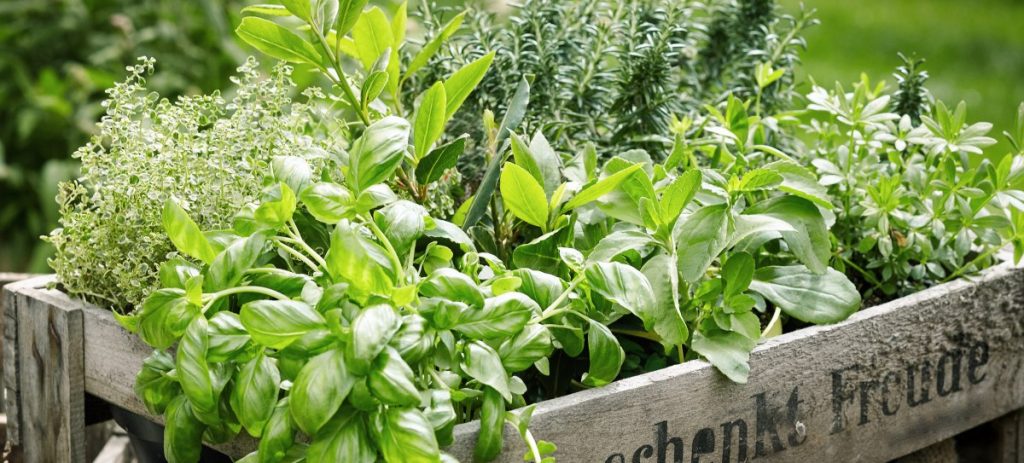Culinary herbs are steadily increasing in popularity as more people perfect the art of using fresh herbs to create delicious, healthy meals.
There is also a growing interest in the medicinal properties of herbs to boost immunity, improve health and treat common ailments.
The increased popularity and interest in herbs means they are potentially one of the most profitable crops for your market garden or permaculture homestead.
Now is a great time to start herb farming and grow herbs for profit.
In this article, you will learn the best herbs to grow for profit, how to start an herb business and where to sell your herbs.

Which Herbs Are Profitable?
Almost any herb can be profitable if you have the right growing conditions, knowledge and a good niche market.
However, as a beginner, it makes sense to start your herb farming business with popular culinary herbs, as they have broad appeal and are known to be the most profitable.
Marketing them will be easier, and you’ll have more options when it comes to where to sell your herbs.
Once you have some experience and have created a loyal client base, you can expand your business to include medicinal and fragrant herbs and value-added products.

Is There Money in Selling Herbs?
The answer is yes. Growing and selling herbs can be profitable, and you don’t need a large area to get started.
One of the best things about growing herbs is that they have many uses and are often also easy to grow.
You can use herbs for medicinal, culinary, cosmetic, ornamental or fragrant purposes.
Because herbs are so versatile, they offer an array of profitable opportunities.
You can sell herbs as live plants, freshly cut for culinary or medicinal use, in herbal bouquets, dried or in various value-added products.
If you’re knowledgeable about the herbs you are growing and willing to do the marketing to get your name known, you’ll be profitable no matter how big or small your herb garden.
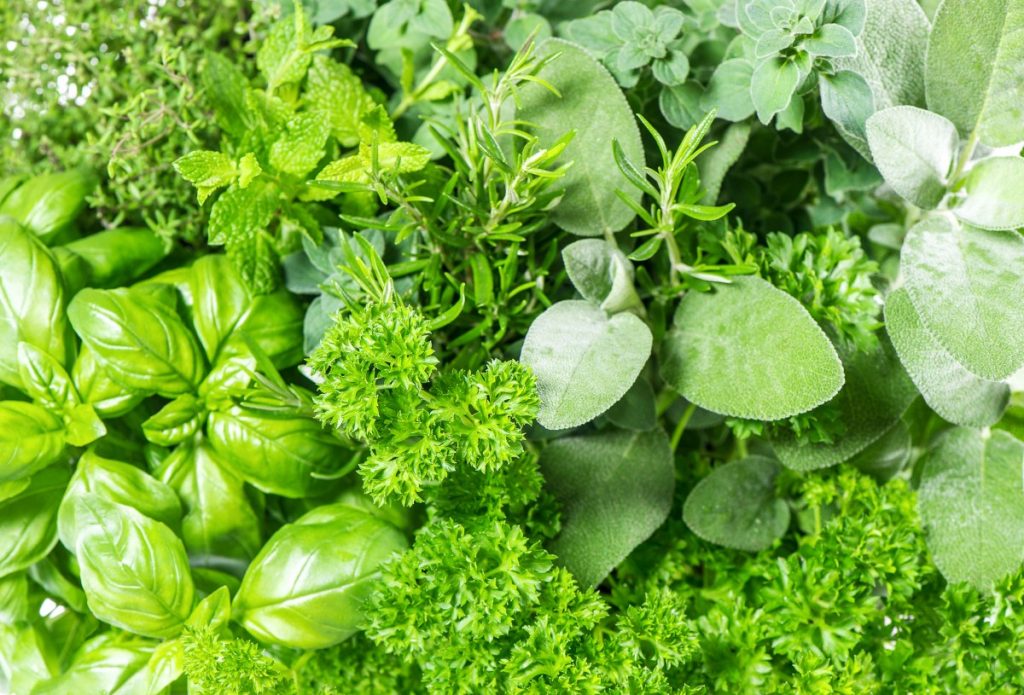
What Are the Best Herbs to Grow for Profit?
Popular, multi-purpose herbs that are easy to care for are the best herbs to grow for profit as they require less labor and provide several marketing opportunities.
However, it is important to do your research first to find a niche market with an ongoing demand for the herbs you hope to sell.
Many herb growers get creative and come up with unique niche products to increase their sales.
To profit from growing herbs, you need to combine your unique skills and interests with the correct sales outlet.
If you do this well, herbs can become a significant part of your small farm income.
How Much Money Can You Make Growing Herbs?
Your setup, ability and available space will affect the amount of income you’ll be able to generate with your herb farm.
However, there are a few things you can do to maximize your income. You should aim to:
- Optimize your use of space
- Minimize labor on weeding and watering
- Choose herb varieties that have the best flavor
- Grow herbs with high production rates
- Find a niche market for your herbs
- Provide information and educate people on how to use your herbs
Using the suggestions above, you could generate as much as $20 to $24 (£14 to £17) per square foot (0.09 square meters) of growing area.
The following scenario will give you an idea of the potential revenue a small backyard grower can generate with niche herbs grown in pots.
Imagine a small garden with 100 square feet (9.29 square meters) of growing space.
You can fit 400 potted herb plants in an area this size, and, when sold, they should generate an income of around $2400 (£1700) for you.
An herb farmer can earn over $30,000 (£21,500) per acre of land each year, growing popular and high-priced herbs.
Best Culinary Herbs to Grow for Profit
Many culinary herbs are both easy to grow and potentially very profitable. Here are some of the best culinary herbs to grow.
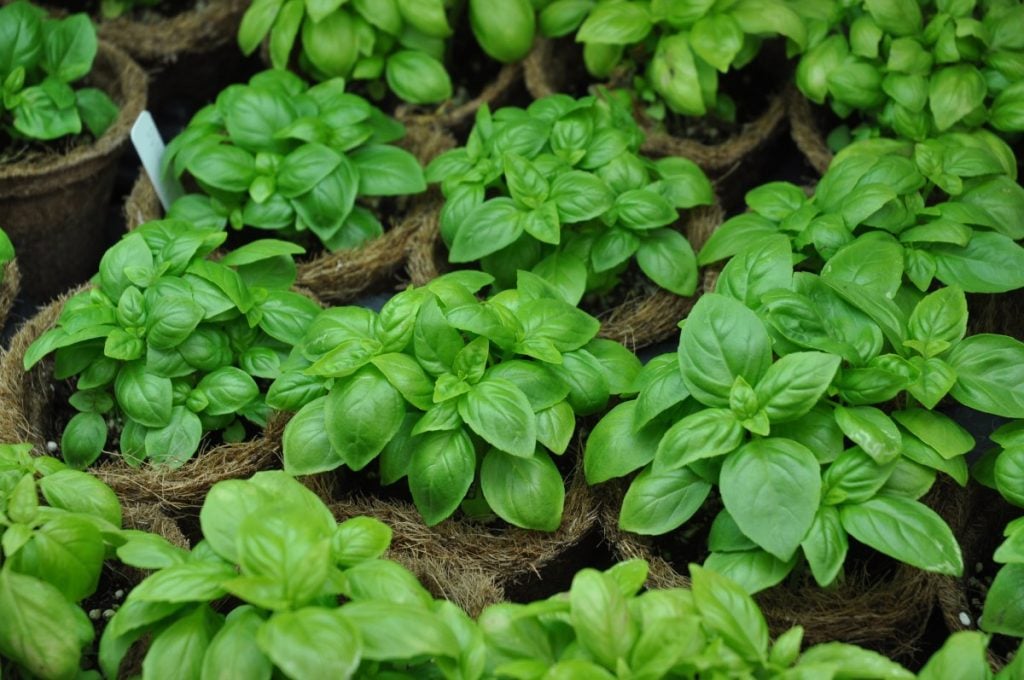
1. Basil
Basil is widely considered the most popular culinary herb and is a key ingredient in Italian cuisine.
Basil adds delicious flavor to almost any dish including pasta sauces, pesto, salads and pizzas.
As a result, it is one of the best sellers at farmers’ markets, and many chefs need an ongoing bulk supply of fresh basil.
Basil is easy to grow from seeds, cuttings or seedlings, and if you plant seedlings, you will have ready to sell plants within 60 days.
You can sell basil as potted plants, cut basil or dried as a spice.
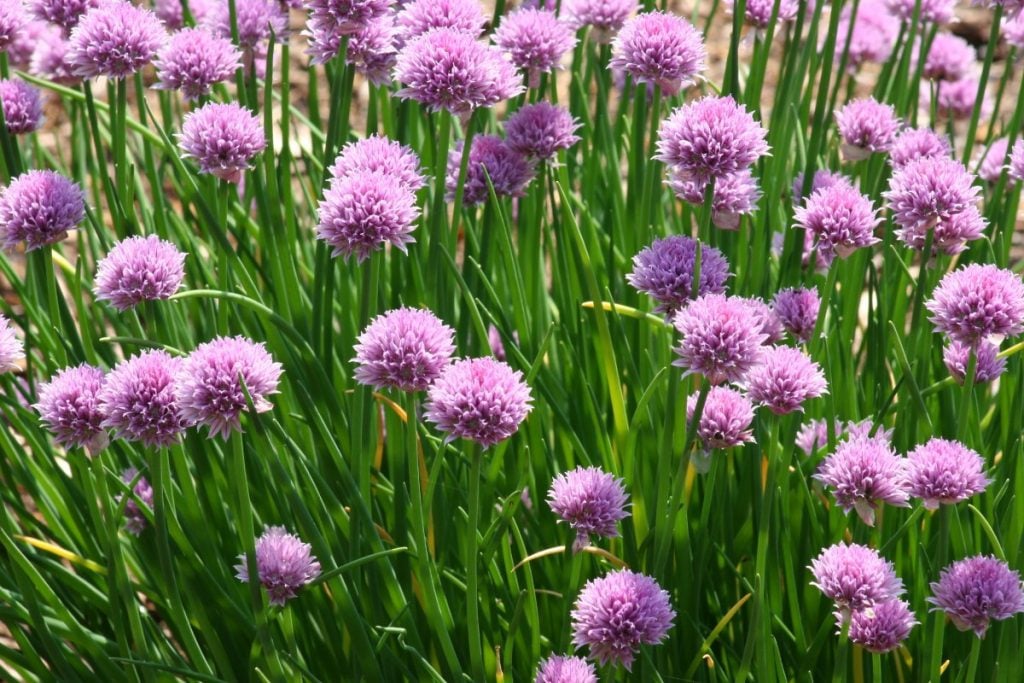
2. Chives
Chives are hardy, nutrient-dense, easy to grow and used in a wide range of culinary dishes.
They smell and taste great, and their edible flowers add a bright splash to any dish.
Chives contain numerous beneficial nutrients that could provide health benefits, including anticancer effects.
You can sell chives as potted plants or as fresh-cut bundles, and as they can be grown in summer and cooler weather, you have an extended sales season.

3. Oregano
Oregano is another popular herb also used in Italian cooking. It is commonly used with garlic and basil in tomato sauces and to garnish soups and stews.
Oregano is known for its culinary use but also has numerous health benefits. It has been used for centuries in the Mediterranean region to treat various ailments.
It is easy to grow oregano from seeds, but it takes a long time to get to a harvestable size.
Most people don’t have the patience, creating a broad market for cut fresh oregano. Oregano seedlings and potted oregano are also good sellers.
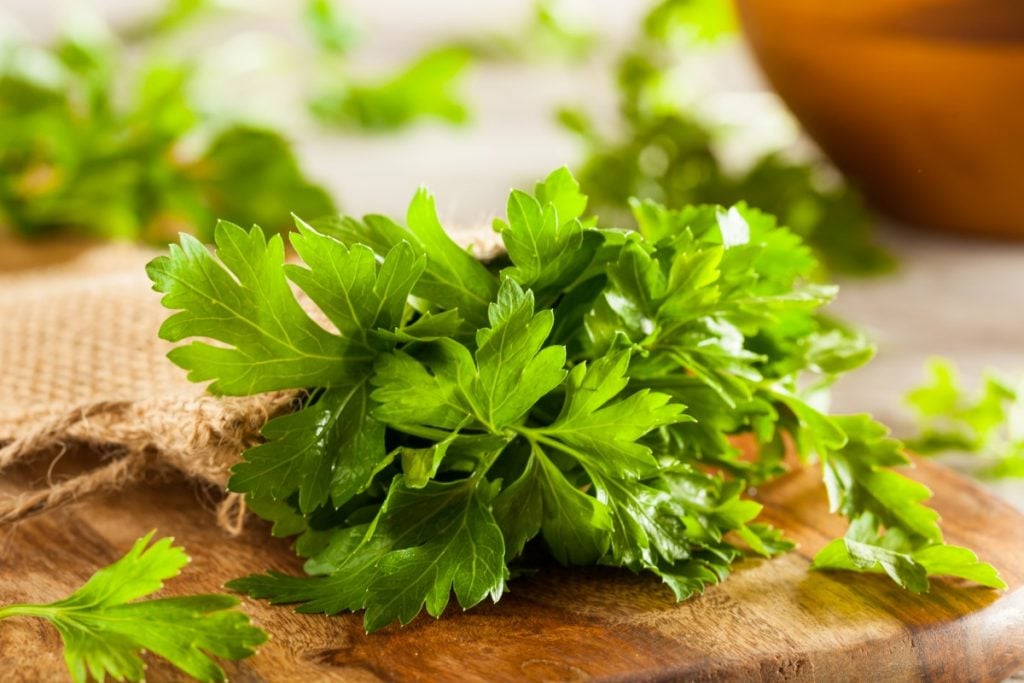
4. Parsley
If you want to grow an herb with mass appeal, then parsley is an excellent choice.
Parsley is extremely popular and is used as an ingredient and garnish in summer salads, winter stews and everything in between.
Flat-leaf parsley and curled parsley are both used in culinary dishes. But flat-leaf or Italian parsley is preferred by many gardeners who consider it easier to look after.
Parsley takes a long time, anywhere from one to two months, to germinate from seeds and needs constant attention as the soil medium must be kept moist throughout the entire process.
As many growers don’t want to go through this process, there is a demand for parsley seedlings.
You can sell parsley seedlings to gardeners and other herb farmers, potted parsley plants to home cooks and large quantities of cut parsley to chefs and restaurateurs.
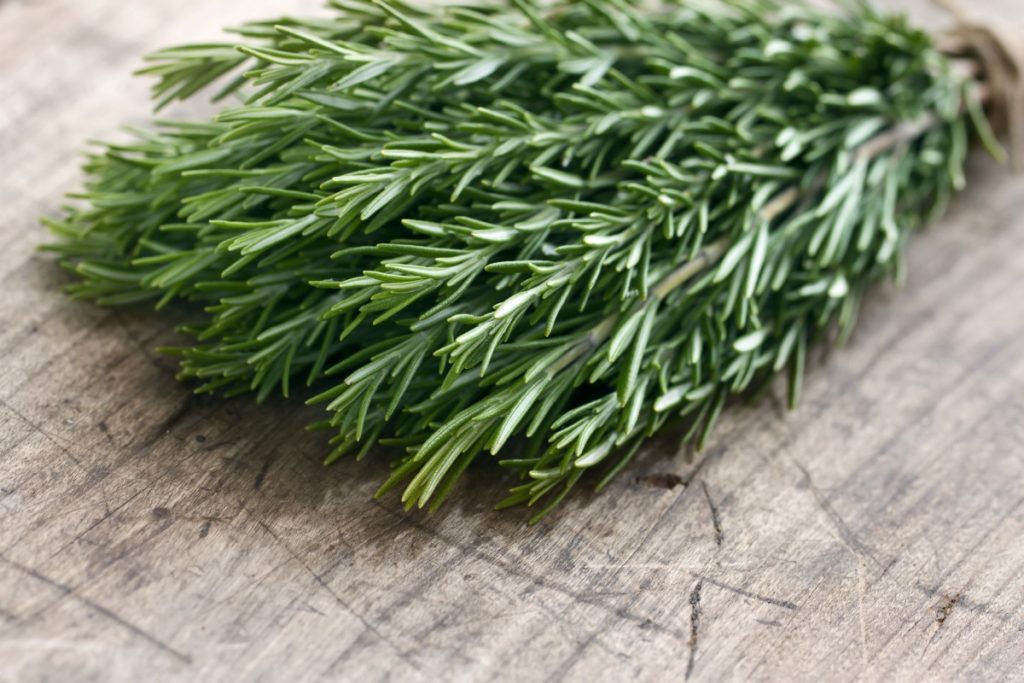
5. Rosemary
Rosemary is widely used in the culinary world and has a strong fragrance and flavor, meaning a little goes a long way.
For this reason, potted rosemary plants don’t need to be very large for you to sell them and are popular with cooks and other home growers.
Rosemary has many health benefits. People use fresh rosemary to make tea, while culinary dishes often incorporate dried rosemary. Dried rosemary is also a popular addition to fragrant sachets and other value-added products.
Rosemary is a perennial shrub that is easy to grow from seeds or cuttings.
Growing rosemary from cutting is a quick, inexpensive way to produce large numbers of plants that you can then sell to local homesteaders and gardeners.
Apart from selling potted plants, you can also sell fresh cut rosemary or dried rosemary.
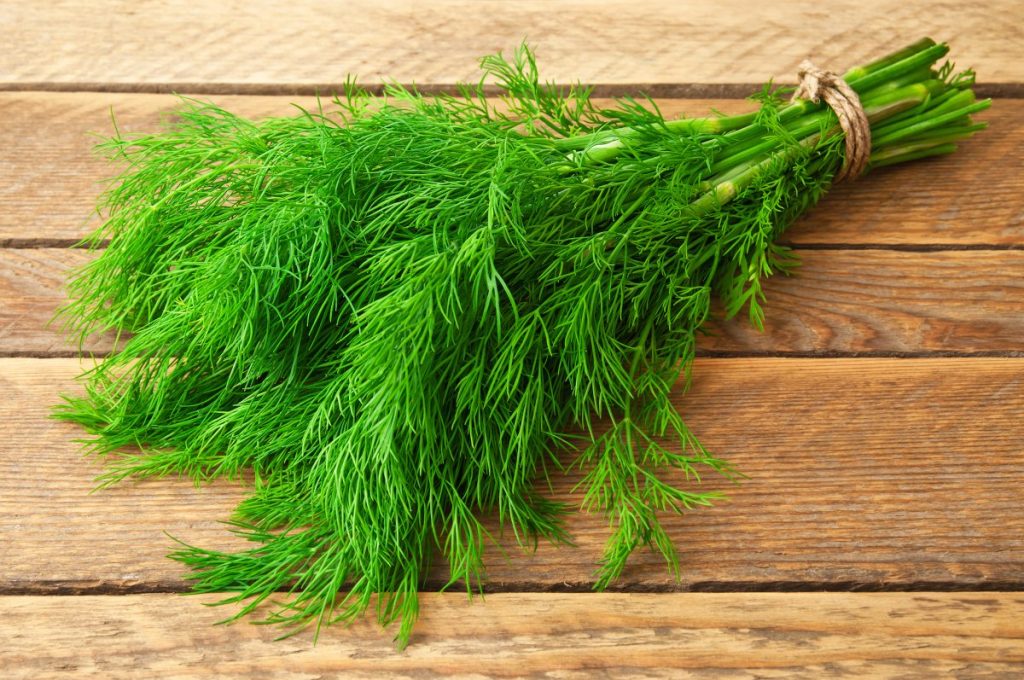
6. Dill
Dill is a popular dual-purpose herb that is grown for both its leaves and seeds.
The leaves have a milder flavor than the seeds and are used in tartar sauce to accompany seafood dishes.
The seeds have a much stronger flavor and are an important ingredient in traditional dill pickles.
You can grow dill from seed, and once started, it grows fast and can get very large.
Remove any flowers from the plants to ensure a good supply of fresh foliage if you want to sell potted plants or fresh-cut leaves.
Dill is an excellent plant to grow in coastal areas as you can market live, fresh dill to local seafood lovers and restaurants.
Alternatively, you could provide mature plants or dill seeds to homesteaders and gardeners for pickling fresh cucumbers.
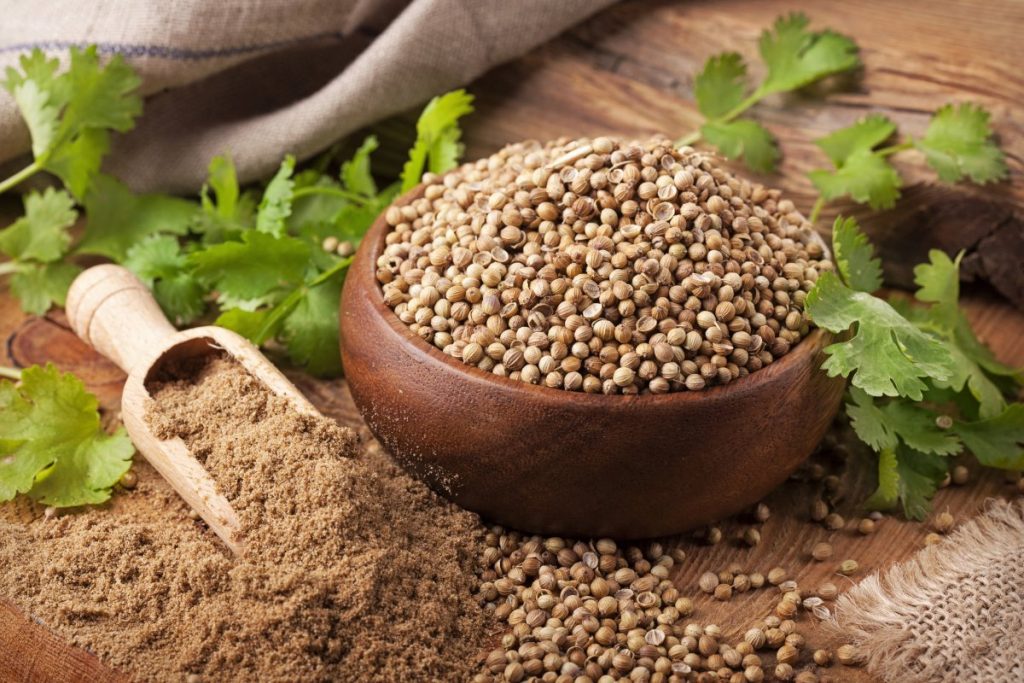
7. Coriander
Coriander, also called cilantro, is a popular culinary herb that is good for digestion and rich in antioxidants providing several health benefits.
Coriander is used more for its leaves than its seeds, although there is an extensive market for both.
Coriander is the name of the plant and its seeds, while cilantro is the Spanish term for the leaves.
Cilantro is used extensively in Mexican cooking and a key ingredient in salsa.
Coriander seeds are commonly used in Indian cuisine and pickling recipes worldwide, making them a staple in the spice cabinet of many different cultures.
Coriander is an annual, which means you can have repeat customers every year, making it a great addition to any herb farm.
Best Medicinal Herbs to Grow for Profit
If you want to grow medicinal herbs for profit, the versatile medicinal herbs below are the perfect place to start.
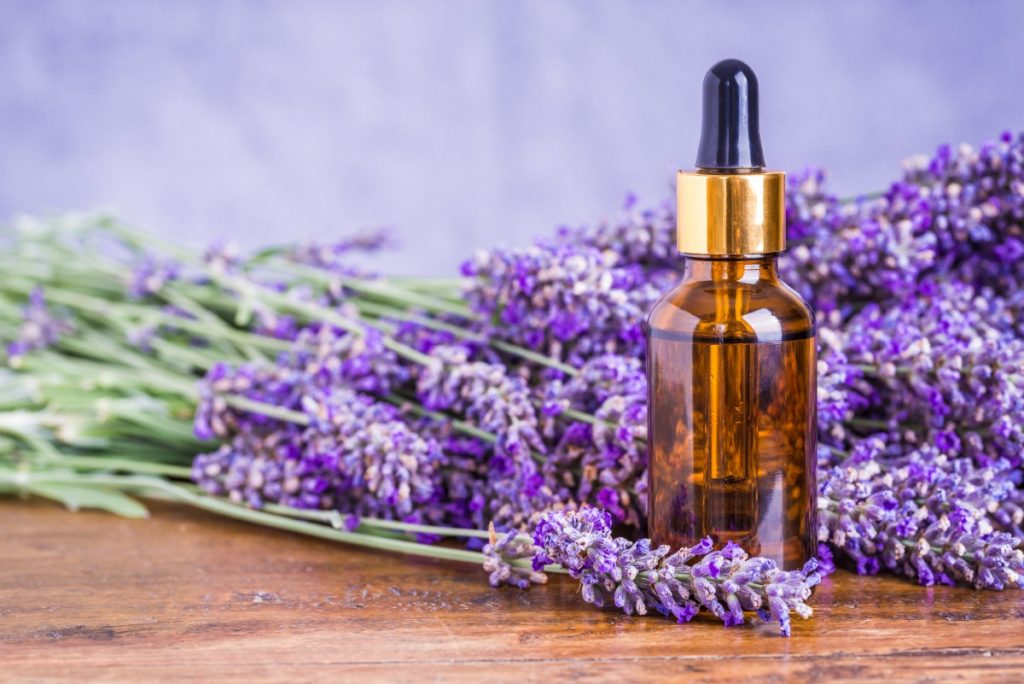
8. Lavender
Lavender is a popular, versatile herb with a multitude of uses.
People use lavender for cooking, herbal tea blends, decorating and craft products such as potpourri and natural soaps.
Lavender essential oils are used extensively in the fragrance industry.
Medicinally it is used for a wide range of conditions, including skincare, pain relief and nervous conditions.
You can sell lavender as potted plants or seedlings but cut lavender flowers often bring in more than plants.
Many people need fresh lavender flowers for cooking or to produce oils and skincare products, while others want dried flowers for their medicinal properties or to create craft products.
You have to grow far more lavender plants if you intend to sell fresh or dried lavender flowers.

9. Chamomile
Chamomile, one of the most ancient medicinal herbs known, is easy to grow and commonly used as herbal medicine to treat a host of human ailments.
Aromatherapy and cosmetics make extensive use of chamomile essential oils, but the most popular use of chamomile is as an herbal tea.
People often use flowers to make chamomile tea, but fresh green leaves and stems can also be brewed as tea or eaten in salads and dips.
You can sell chamomile seedlings, fresh-cut chamomile or dried chamomile flowers. It is popular when marketed as a tea ingredient and soothing herbal remedy.
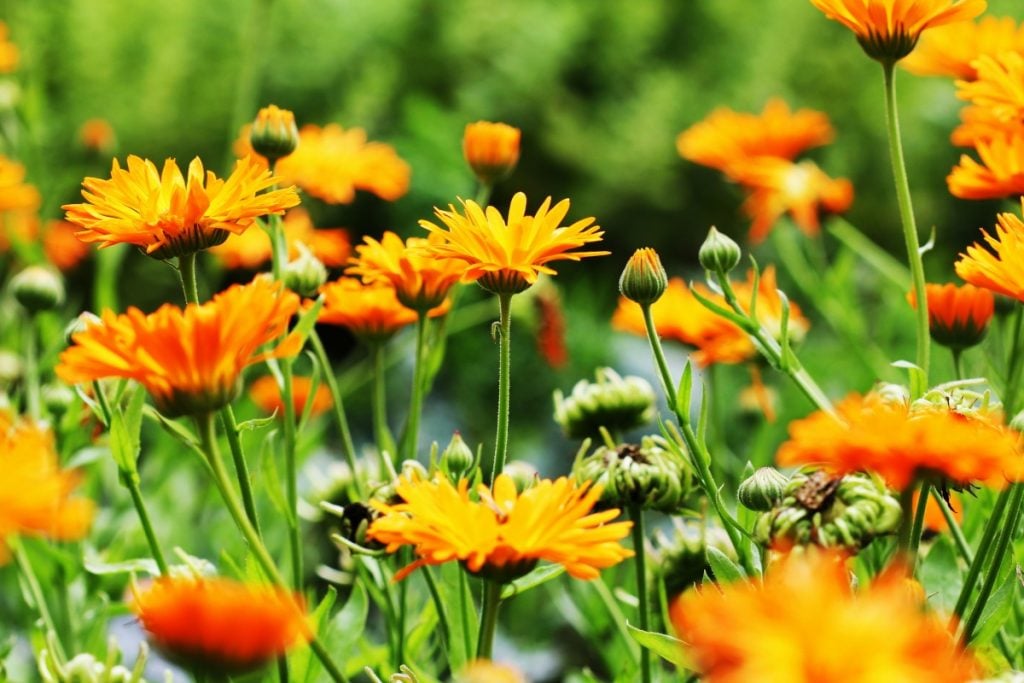
10. Calendula
Calendula is a flowering plant and one of the easiest medicinal herbs to grow.
It is commonly used to make herbal tea or as an ingredient in cosmetics, ointments and creams.
You make a calendula tea with flowers, but calendula extract requires both flowers and leaves.
Calendula flowers also have culinary uses and give a burst of color that makes a meal special. They can be eaten fresh in salads, added to rice or dried.
Calendula is particularly good for digestion and skin preparations and is wonderful as a foot soak or bath herb.
You can sell calendula as potted plants, cut flowers and leaves or in value-added products such as salves for sunburn, chapped lips, and minor skin abrasions.
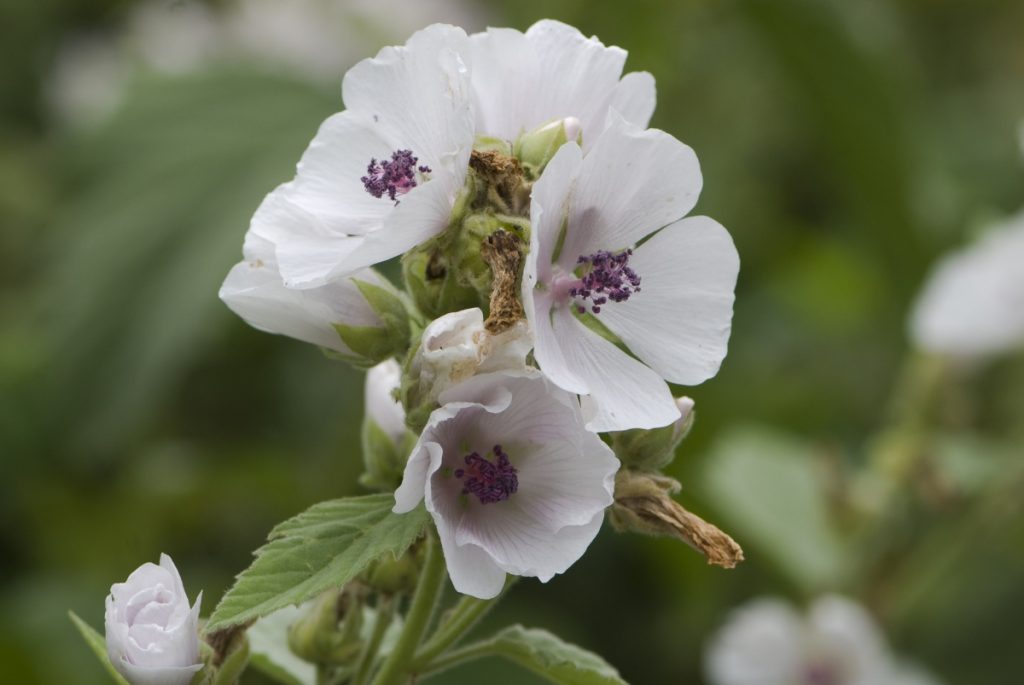
11. Marsh Mallow
The marsh mallow plant has several medicinal benefits and has been used for thousands of years to treat respiratory, digestive and skin conditions.
The leaves, flowers and roots of the marsh mallow plant are edible and used fresh or dried. Its healing powers come from the mucilage, a sap-like substance the plant produces.
People use the leaves and flowers as poultices to soothe skin irritations or herbal tea to treat coughs and bronchitis.
The roots contain the most mucilage and can also be used in teas and poultices or taken in powdered form.
Young spring leaves are mild tasting and make a healthy addition to a green salad.
Marsh mallow plants are perennials that grow from seeds, root divisions or cuttings.
Marsh mallow root is the most common product as it has the highest percentage of mucilage.
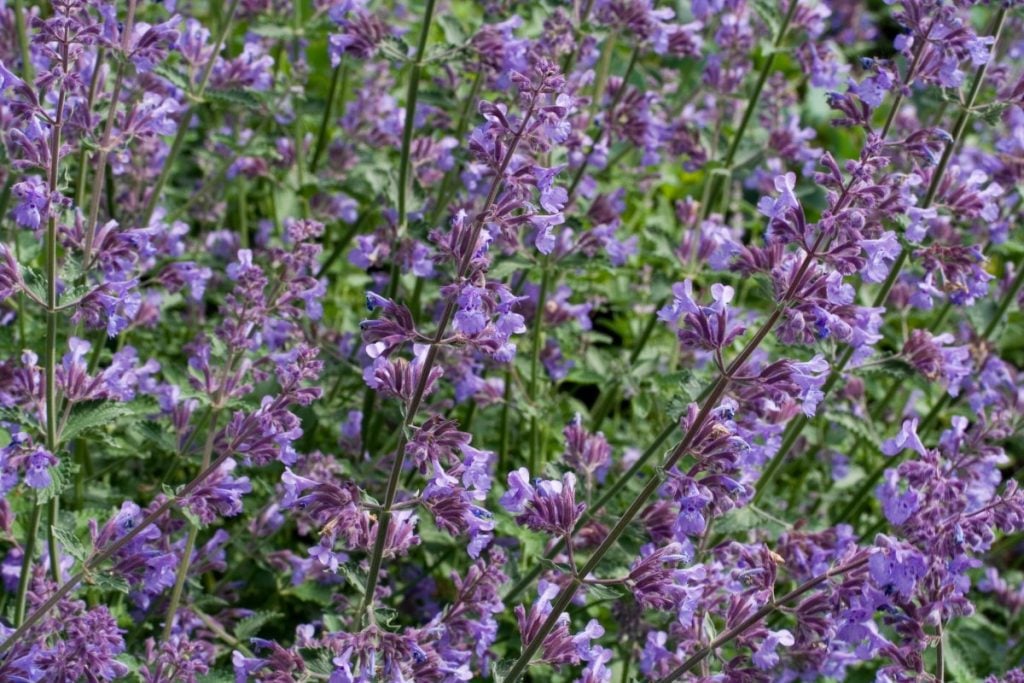
12. Catnip
Catnip is a medicinal herb with several health benefits for humans, but it is more commonly known as a treat for cats.
It provides herb growers with an opportunity to target cat owners and expand into the pet product market.
Catnip is easy to germinate and fast-growing, so it won’t take long for plants to reach a sellable size.
Another reason that catnip is such a great seller is that cat lovers cannot resist spoiling their felines.
Catnip can be sold as potted plants or cut and sold fresh or dried as a cat treat or an herbal tea for humans.
How do I Start My Own Herb Business?
Now that you have some ideas on which herbs to grow for profit you may be ready to start your own backyard herb business.
Here are six steps to get your profitable herb growing business up and running.
Step 1: Do Some Research
Before you rush out and buy your materials and seeds, it’s worth doing some research to find potential markets for your herbs.
Visit local farmers’ markets and chat with herb growers, herbalists and herb retailers in your area to get an idea of what sells and which herbs they would like to have but can’t find.
It is also worth researching which herbs grow well in your local conditions and how easy it is to get specific herb seeds or cuttings.
Step 2: Decide Which Herbs to Grow
When you have finished your research, it’s time to decide which herbs to grow.
Consider which herbs are in demand in your area, how much space you have and if you want to grow culinary or medicinal herbs.
It’s better to focus on growing a small selection of popular, multi-use herbs rather than a wide range that may not sell as well.
Once you have built up a customer base, you can increase your selection to meet their requirements.
Now is also the time to decide what type of herb products you want to sell, as this will affect the amount of space you need.
Are you going to supply potted plants, sell fresh cut herbs or sell dried herbs?
You can do all three but will need more space to grow mature plants for fresh-cut herbs.
You will also need a suitable drying space if you plan on selling dried herbs.

Step 3: Gather Materials
The great thing about starting an herb business is that you don’t need a lot of expensive equipment.
The first thing you need is a dedicated space to grow your herbs. It should have lots of sunlight and be safe from pets, children and other livestock.
Your space could be indoors, on a patio, in a greenhouse or outdoors in raised beds.
Remember, you’ll need to be able to access your plants from all sides.
If you plan on selling dried herbs, you will also need a space where herbs can be hung to air dry.
Once you have a growing space, it’s time to gather your materials. You will need the following:
- Seed or plug trays – For starting your seeds.
- Containers – Six Inch containers that drain efficiently are ideal. If your containers don’t drain well, the herb’s roots will rot.
- Growing medium – Herbs do better in a growing medium rather than in plain soil. You can buy a pre-mixed growing medium or mix your own herb growing medium.
- Watering can or garden hose.
- Spade.
- Herb Seeds.
- Scissors – If you want to sell cut fresh herbs, you will need these.
- Twine – To tie your herbs together for drying.
- Airtight containers or bags – Store dried herbs in airtight containers or sealed bags until you sell them.
Step 4: Plant Your Herb Seeds
Even if you plan on growing your herbs outdoors, it is best to start your seeds indoors in seed trays or plug trays.
Fill your trays with the growing mix, moisten with water and place the seeds on top.
Lightly cover the seeds by scattering a small amount of growing mix over them.
Place the seed or plug trays in a warm spot that gets a good amount of sunlight to germinate.
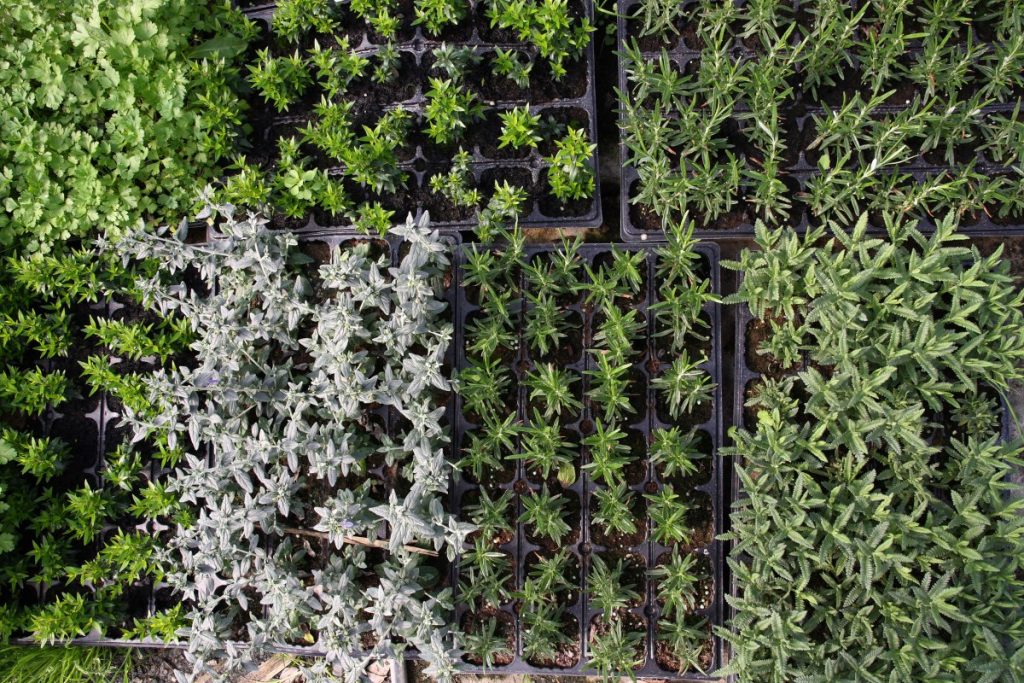
Step 5: Transplant Your Herbs
Your herbs should be ready to transplant in 5 to 10 weeks. You can transplant them into larger containers to sell as potted plants or into growing beds if you plan on selling fresh-cut herbs.
Water the plants two hours before transplanting them, then gently remove them from the seed trays and place them in small holes in the new containers or growing beds.
Lightly push down the growing medium or soil around them for support and water them again.
When transplanting herbs outdoors, wait until evening to prevent them from getting burnt by the sun.
Step 6: Care For Your Herbs
Keep your plants fertilized and watered until it’s time to sell or harvest them.
Learning what works best for your specific herbs and growing conditions can take some trial and error, but using the tips below should help your herbs thrive.
1. Don’t overwater your herbs
Only water your herbs when they need it. Once a day is usually adequate, and it is better to water them in the morning.
The amount of water to use will depend on the type of plant, growing medium and container.
2. Only use organic fertilizers
Organic fertilizers help plants grow at a slower, less-stressed rate which makes them stronger and healthier.
3. Compost manure before use
Manure is a beneficial organic fertilizer, but it needs composting before being used.
If you use fresh manure, you risk spreading disease and bacteria to your herbs.
4. Prune frequently
Try to prune your herbs once a week to help them become bushier. Cut off any overly long pieces and flowers that have opened.
5. Pinch off flowers to get more leaves
Herbs grow leaves before they grow flowers. Once the flowers open, they use more energy on flowers.
To encourage more leaf growth, pinch off flowers as soon as they start to form.
6. Mulch outdoor herbs in winter
Herb roots are very susceptible to frost, but burying them under 4 inches (10 cm) of mulch will help keep them from freezing.
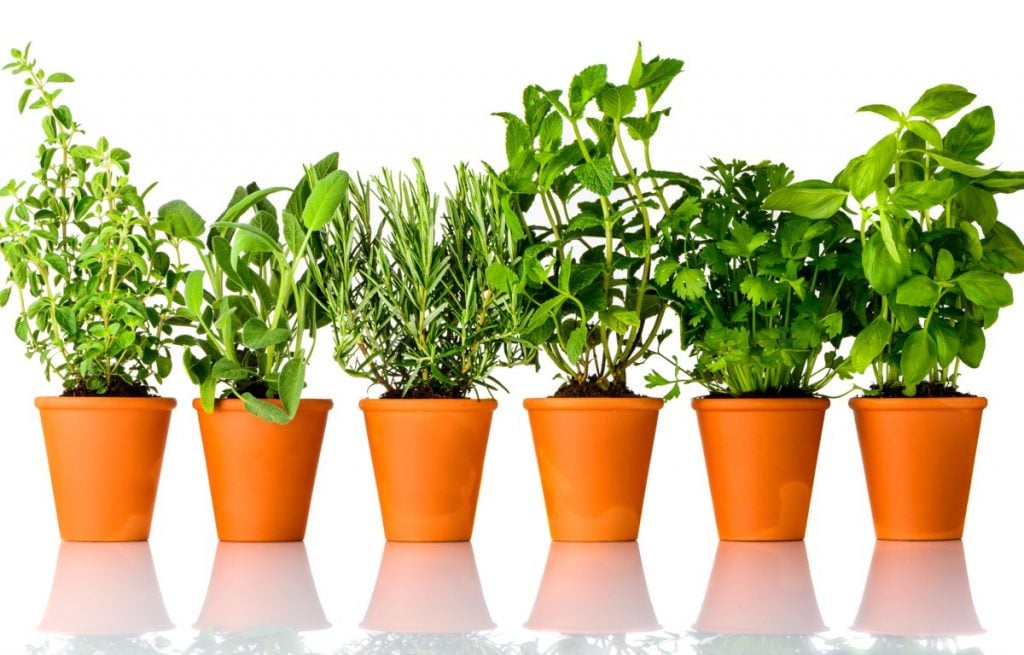
Step 7: Market and Sell Your Herbs
Once your herbs are big enough, it is time to start marketing them. But first, you need to decide where to sell your herbs and how much to charge.
Pricing Herbs
When it comes to pricing your herbs, there are no hard and fast rules, and the amount consumers are willing to pay will vary based on your area and the type of herb.
Herbs like basil, chives, cilantro and catnip typically bring in more profit than others.
Here are some tips to help you with pricing.
- Keep detailed records of how much money you’ve spent on seeds, supplies, packaging, and consumables like water and fertilizer, so you know what it has cost you to produce your herbs.
- Don’t forget to factor in your labor, time and transport costs.
- Look around and see what herbs are selling for in your local stores. And, if possible, sell your herbs for a little less.
- If there are other herb growers in your area, keep your prices similar and don’t undercut them, or you’ll risk making enemies.
- To cater to a wide range of consumers, sell small bundles or bags of herbs, but allow enough markup so you can offer discounts to customers who want to buy in bulk.
Consider Value Added Products
If you create value-added products with your herbs, you can ask for higher prices and improve your profits.
Like most other products, the more processing your herbs go through, the higher the price you can ask.
If you create herbal salves, lip balm, shampoo, tinctures, or other value-added medicinal products, you can ask more and open up new wholesale and retail opportunities.
Herbal teas, dried herb pillows, candles and soaps are all high-profit items that are easy to make and popular.
Now that you have priced your products, you need a place to sell your herbs and value-added herbal products.
There are several options worth considering. In the next section, we look at these in more detail.
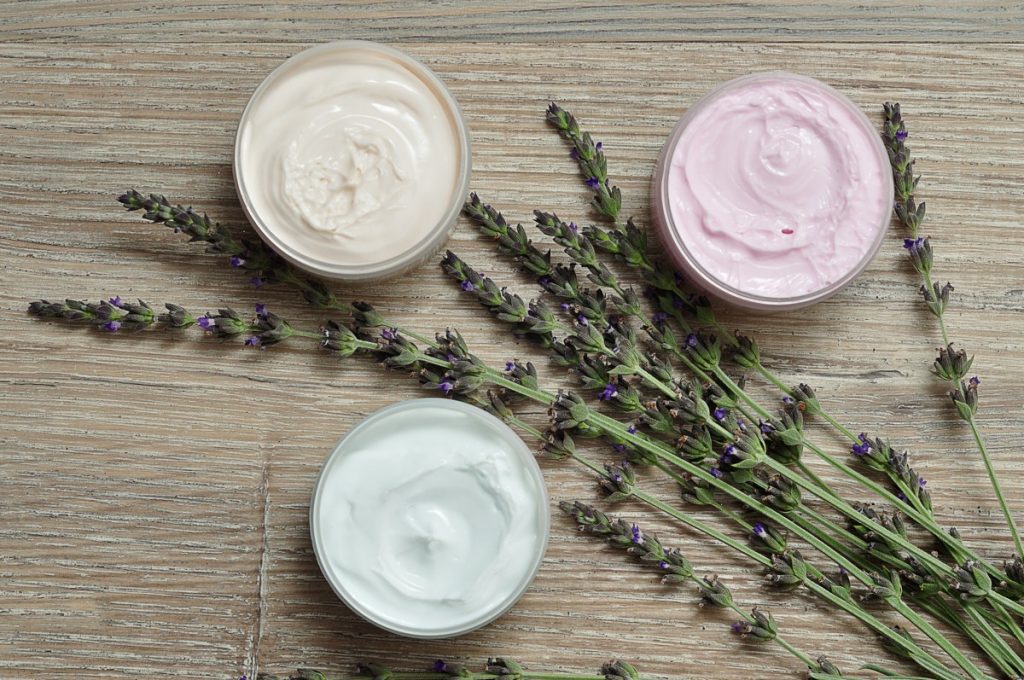
Where Can You Sell Herbs?
Marketing your herbs is a must, but knowing where you can sell them is equally important.
There are several options, and no two herb businesses are the same.
Some gardeners have better results than others with different options, so it is sensible to try a few and discover what works best for your unique situation.
Here are some ideas to try when figuring out what works best for you. You can sell herbs:
1. From Your Backyard
In some areas, you may be allowed to sell herbs directly from your backyard.
It is more profitable than selling herbs wholesale, and you don’t need to pay any farmers’ market fees or donate a percentage of your profits.
But, you will not have any passing foot traffic and will need to do substantial marketing to make people aware of your offering.
You could try dropping off leaflets in the neighborhood or putting notices on local bulletin boards.
2. At Local Fundraising Events
Fundraising events hosted by local churches or charities can be an effective way to build awareness and get your products known.
People are often more likely to purchase if they know a percentage is going to a good cause.
You can also use it as an opportunity to let people know how to contact you and where else they can get your herbs.

3. At Farmers’ Markets
Farmers’ markets are one of the best places for herb growers to sell their herbs.
They are a great way to make a name for yourself and build relationships with customers.
Farmers markets usually charge a fee for you to set up a booth, but often bring in a lot of business.
You need to take the fee and the time involved in selling at the market into consideration when deciding what works best for you.
Remember, your booth needs to look attractive and inviting, so work on your display.
Packaging is also important, and you need enough product to keep your table from looking empty.
4. To Local Restaurants
Contact local restaurant owners and chefs to see if they are interested in purchasing bulk fresh herbs.
If you live in an area with several herb growers, you may need to be a little more competitive with your pricing to go this route.
5. At Pet Stores
If you are growing catnip, then you could try approaching local pet stores. You may be able to provide them with sachets of catnip to sell to their customers.
6. Direct to Herbalists
Are there any herbalists in your area? If not, are you willing to ship herbs nationally?
If the answer is yes, then try contacting herbalists directly and offer wholesale herbs to them.
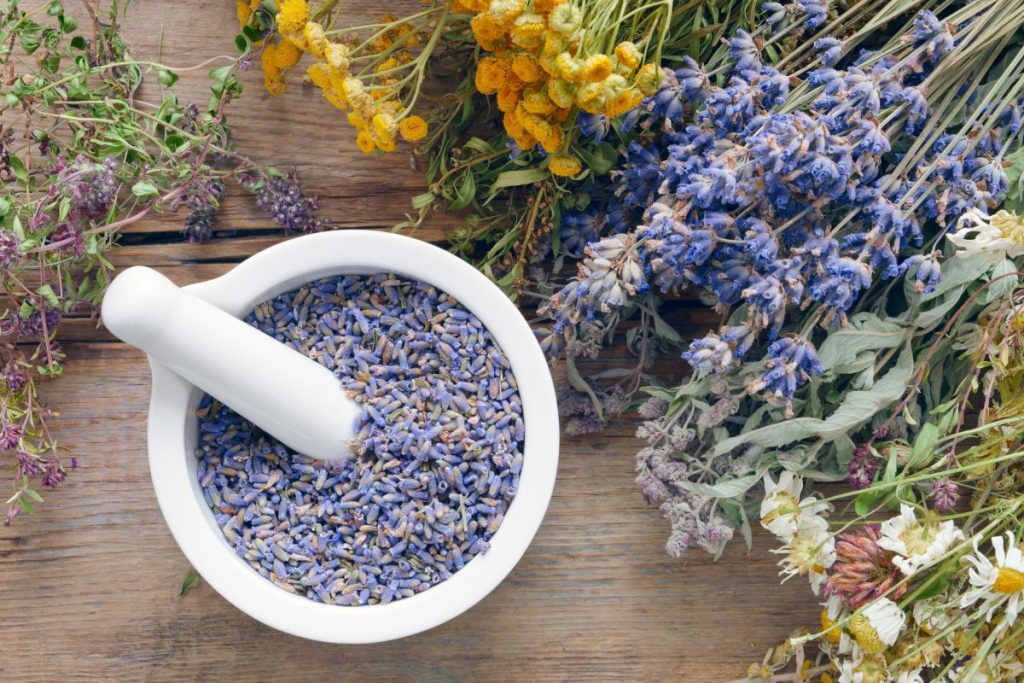
7. To Essential Oil Companies
The essential oils market is growing continuously, which means essential oil companies will need more fresh herbs.
If you have been growing herbs for some time and have the space and know-how to produce large quantities of fresh herbs, try contacting essential oil companies and see if you can become a grower for them.
8. Wholesale to Herb Businesses
The retail herb business should have similar growth to the essential oils industry, and herb retailers will need ongoing supplies of high-quality herbs.
Approach local retailers to become a wholesale supplier, and you could generate a steady, reliable income.
9. From a Roadside Farm Stand
If you live in the country on a busy route, a roadside farm stand could be a profitable outlet for your herbs.
Dried herbs are better for a farm stand as they have a longer lifespan.
You can sell dried herbs as whole bundles or in bags, and if you find you have enough traffic, you could try selling fresh-cut herbs.
10. Online
Online shopping is becoming a way of life. People spend a substantial amount of time online shopping, searching for information or chatting on social media.
There are several ways you can promote and sell your herbs online. Here are a few to consider:
- Facebook
Facebook has made online marketing much easier for small herb farms.
Most areas have local Facebook groups where you can promote and sell local goods.
Join as many local groups as you can and try using Facebook Marketplace to increase your visibility.
If you create a Facebook page, prospective customers can “like” your page and stay informed whenever you have herbs to sell.
Pictures play an important role in Facebook marketing, so be creative and show your products the best possible way.
- Craigslist
Craigslist is free to use and a great way to build a local customer base for your herbs. Their terms only allow you to sell products in your geographic area.
Create a good headline for your Craigslist ad to catch attention and get people to click and see what you are offering.
If you are selling herbs from your backyard, this is a great way to market to local customers.
- Etsy and eBay
Etsy and eBay are online marketplaces where you can sell your homegrown or handmade items.
However, both charge fees to list and sell items, and you will also need to consider the additional Paypal or credit card processing fees for any online transactions.
When selling your herbs online, you’ll also need to plan your packaging and shipping methods.
If you are a small herb gardener, it’s worth selling to your local market first before trying online marketplaces.

Final Thoughts
Herbs are often easier to grow and have more uses than many profitable fruit and vegetable crops.
Versatile herbs could be the ideal crop for a profitable homestead, permaculture farm or garden.
As a bonus, you don’t need a lot of space to get started growing herbs for profit, and even a small backyard garden can generate a sizable income.
Learn more about other profitable crops to grow or get some inspiration from our small scale farming ideas.
